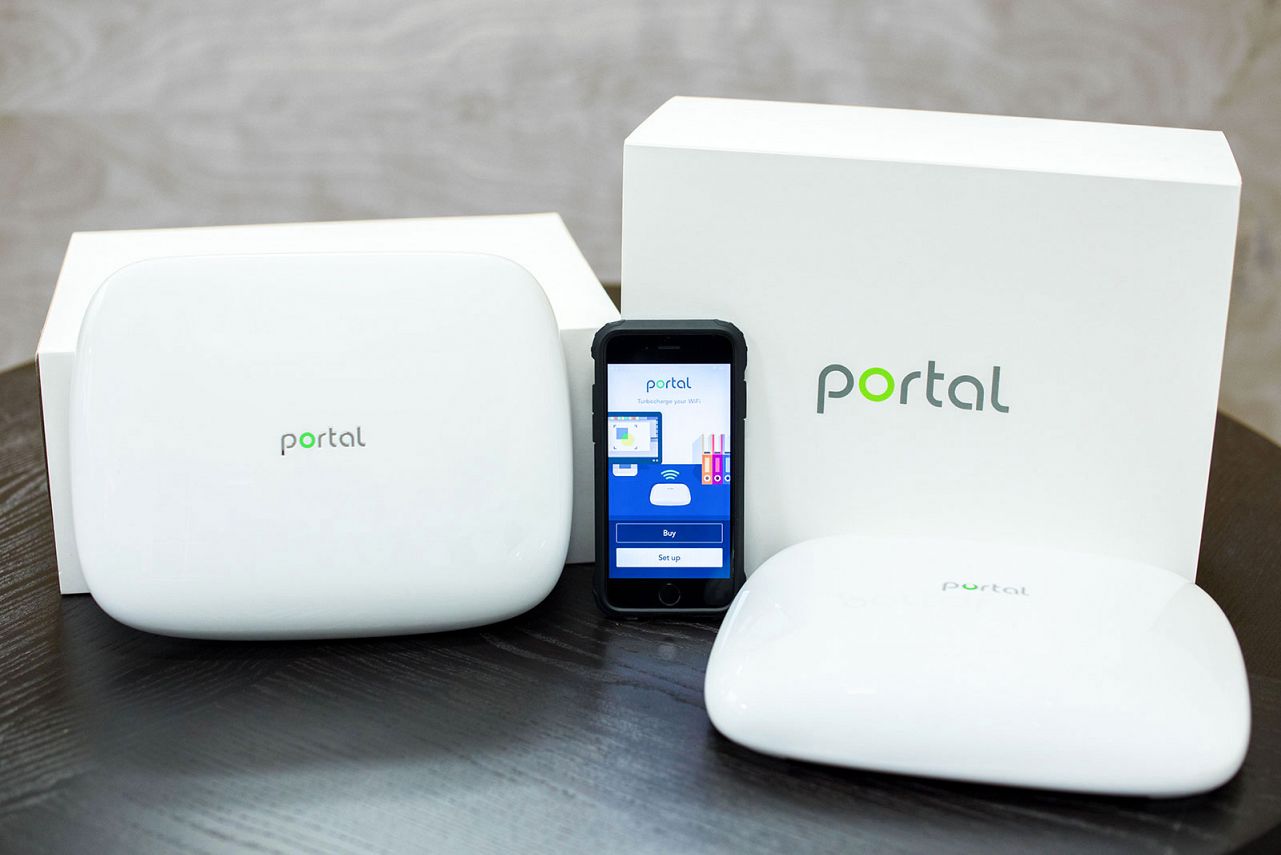Pop-up Review: Portal Wi-Fi

In the world of consumer routers the Ignition Design Labs (IDL) Portal is slightly unusual. It has the usual 2.4 and 5 Ghz Wi-Fi bands but differs from many (not all) routers in that it also employs Dynamic Frequency Selection or DFS which allows on-the-fly access to a range of 5 Ghz channels from 52 to 140 (in North America) typically reserved for airplane radar. But DFS is not new technology. For example, the old Apple Extreme router had DFS but it certainly did not work as seamlessly as Portal’s implementation does. My guess is that most manufacturers don’t implement DFS because of the strict FCC certification process required for use in routers. It’s too bad, because it’s (almost) like having your own private Wi-Fi channels.
With 1 WAN, 4 LAN, 2 USB2 and no less than 9 (yes, nine) antennas IDL claims one Portal can cover ~3k sq.ft. or it can be configured as a mesh network using a maximum of two devices for ~6k sq.ft. of coverage. Of course those numbers most likely assume ideal conditions so keep your expectations in check. The Portal site states there is “wireless and wired backhaul available” for communication between Portals. But unlike a tri-band router where the third band is used as a dedicated backhaul the Portal is a dual-band device. Despite this my network speed does not seem to be adversely affected as far as I can tell.
Security
Security features seem on par with typical routers meaning the usual WPA2 firewall and basic parental controls. The lack of advanced cybersecurity is not an issue for me since I use the Bitdefender BOX security hub which outperforms typical router security on every level so if you want robust security features look elsewhere.
Software/App
The mobile app is extremely basic but works ok for the initial setup. The configuration settings are accessible via a Web GUI and should offer enough settings for the typical user, though I’m sure the hardcore crowd will want more. But what else is new, right? Finally, for you router geeks that like to tinker its firmware is based on OpenWRT.

I use a Portal mesh in my Wi-Fi challenged home and now have strong seamless coverage everywhere. But that’s not the best part. In my absurdly congested urban neighborhood I have the DFS channels (literally) all to myself. How do I know? I use a network scanner. Everyone else is fighting each other on the usual (congested) channels while I cruise along all by myself. Nice!
But it’s not all perfect and I do have a few nits to pick:
- Cons
- Dual-band only. No third band for dedicated backhaul.
- Web GUI (and mobile apps) very basic.
- Guest Network disabled in Bridge Mode.
- No IPv6 support.
- USB 2.0 ports.
- Infrequent software/firmware updates.
Portal has easily been the fastest and most stable router I’ve owned. It’s also my first experience with DFS and mesh, neither of which have disappointed. Even though Portal lacks the extensive features and polished software of cutting-edge routers it’s been a very solid performer. Plus it has an elegantly simple and clean aesthetic. Having experienced the benefits of DFS I simply can’t (and won’t) go back to a non-DFS router. Part of me wishes more routers used DFS, but I’m also glad they don’t because I like not having to share channels. There’s a lot to like and could stop here, but...
Wrap It Up
The original Portal (which is what I own) has been abandoned by IDL. There was a short-lived collaboration with Razer selling the Portal but it seems that too has run its course. Clicking the Buy Now button on the Portal site redirects to a .pdf. Thankfully the DFS technology lives on even though it has not been widely adopted by most router manufacturers. A quick visit to the bleak Portal community forum will confirm that support from IDL is essentially nonexistent at this point. It’s a disappointing but inevitable reality of technology, I suppose.
For myself Portal has been a rock solid (mesh) router that Just Works™. No, it’s not the last word in cutting-edge technology but there’s a lot to be said for set-and-forget dependability. Still, the fact remains it is no longer being developed. If you want to indulge your curiosity grab a used one (or two for a mesh setup) on eBay. There are a lot of them and they’re cheap. I intend to keep mine for the time being, mainly because I really do not want to give up DFS, but also because I’m waiting for Wi-Fi 7 routers to drop in price.